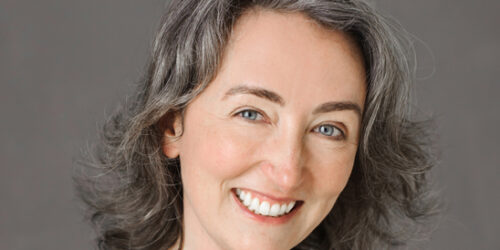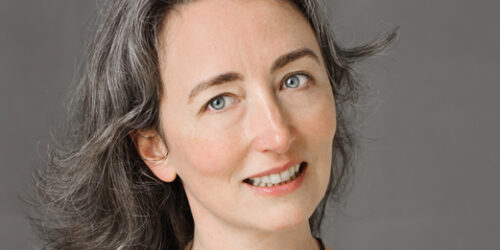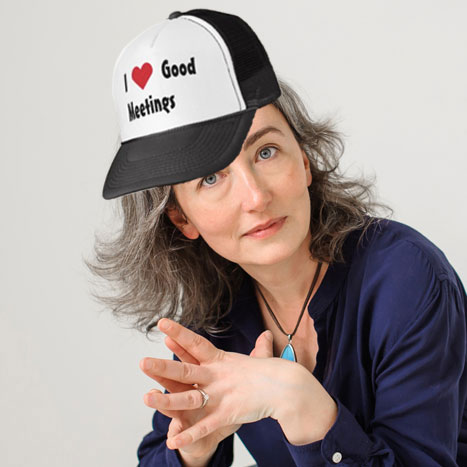How Your Meeting Room Setup Influences Productivity and Engagement
The shape of your conference room table tells a story to everyone who walks in the room.
As a meeting expert, I get a lot of questions about how to change people behaving badly in meetings. Employees want to know how to influence the leaders who use meetings to hold court. Team members who lurk silently in the back of the room, or who sit at the far end of the table and check their email. The person who talks on and on, seemingly oblivious to others waiting their turn to speak.
All of these questions ask about how to deal with difficult people – how to fix their behavior. I agree with the famous 20th-century inventor R. Buckminster Fuller, who once said:
“You never change things by fighting the existing reality. To change something, build a new model that makes the existing model obsolete.”
You can’t fix people, but you can model the environment to encourage different behavior. For instance, the physical layout of your meeting space can have a big impact on the group’s behavior.
Meeting spaces that reinforce power hierarchies
A Gentleman in Moscow is set at the dawn of the Soviet Union. The tale of what happened after Stalin’s death perfectly illustrates how the shape of a meeting room can shape the meeting outcome.
Stalin didn’t name a successor, leaving several rivals vying to become the new leader. In the book, the leading power players were invited to a dinner meeting. They arrived to find a large U-shaped table with no name tags, and no instructions. Everyone had to sort themselves out and select a place at the table to sit.
Some chose to sit down the legs of the U, and some at the table that formed the base of the U – the head table, as it were. No one claimed the seat in the absolute center of the U, leaving the traditional place of power vacant.
Khrushchev arrived late. He entered, walked around the table exchanging pleasantries, and shook hands. Then, casually and with natural authority, Khrushchev claimed the center seat.
Shortly thereafter, Khrushchev was named the new leader of the Soviet Union.
The U-shape setup is an efficient way to seat a lot of people who will either be looking at a presenter positioned at the open part of the U, or at the leader who sits in the top center. It also constrains visibility and interaction for everyone else.
When you see movies depicting meetings between politicians or boards, you’ll see rectangular shapes over and over because this is a visual shortcut that communicates the power and dominance part of the story. Game of Thrones fans know that the Small Council in King’s Landing sits at a rectangular table with the most dominant member at the head.
Meeting spaces that equalize power dynamics
Round tables, on the other hand, equalize the power dynamics. They make it possible for everyone at the table to listen to or address anyone else equally. When ideas are shared in writing, they can literally be placed in the common center of the group, becoming the work of “us” collectively. The circle is the shape of gathering around a campfire, of collective intent, and unity. Star Wars fans may note that the Jedi council meets in a circle.
Teams that meet standing up will naturally form a circle or a horseshoe shape around their common bulletin board.
How the wrong shape can undermine the meeting
I recently led a workshop and had requested a room with several round tables. Imagine my horror when I arrived to find a large U-shaped setup, complete with white linen and drinking goblets.
I should have re-arranged the room right then, but I felt bad about undoing the lovely place settings and didn’t. It was a mistake.
I improvised a lot that day trying to make things work. Despite my best efforts, we ran over time, and the interaction wasn’t as dynamic as it needed to be. The group kept staring at me like I was a guest lecturer there to entertain them, rather than a facilitator guiding them to work together. It just wasn’t possible to create the same small group intimacy, nor to get as deep into the material as we needed to, when everyone had to awkwardly twist about to hear each other.
Whatever room setup you have, you can make it work, but if the room layout says hierarchy when you want group ownership, you’ll be fighting ingrained behavior all the way. When you have a choice, work to set the room up to create the power and interaction dynamic you need.
Don’t try to change the people. Change the environment.
This content was originally posted here:
https://www.inc.com/jelise-keith/this-novel-set-in-communist-russia-perfectly-illustrates-why-you-should-re-think-your-meeting-room-setup.html



